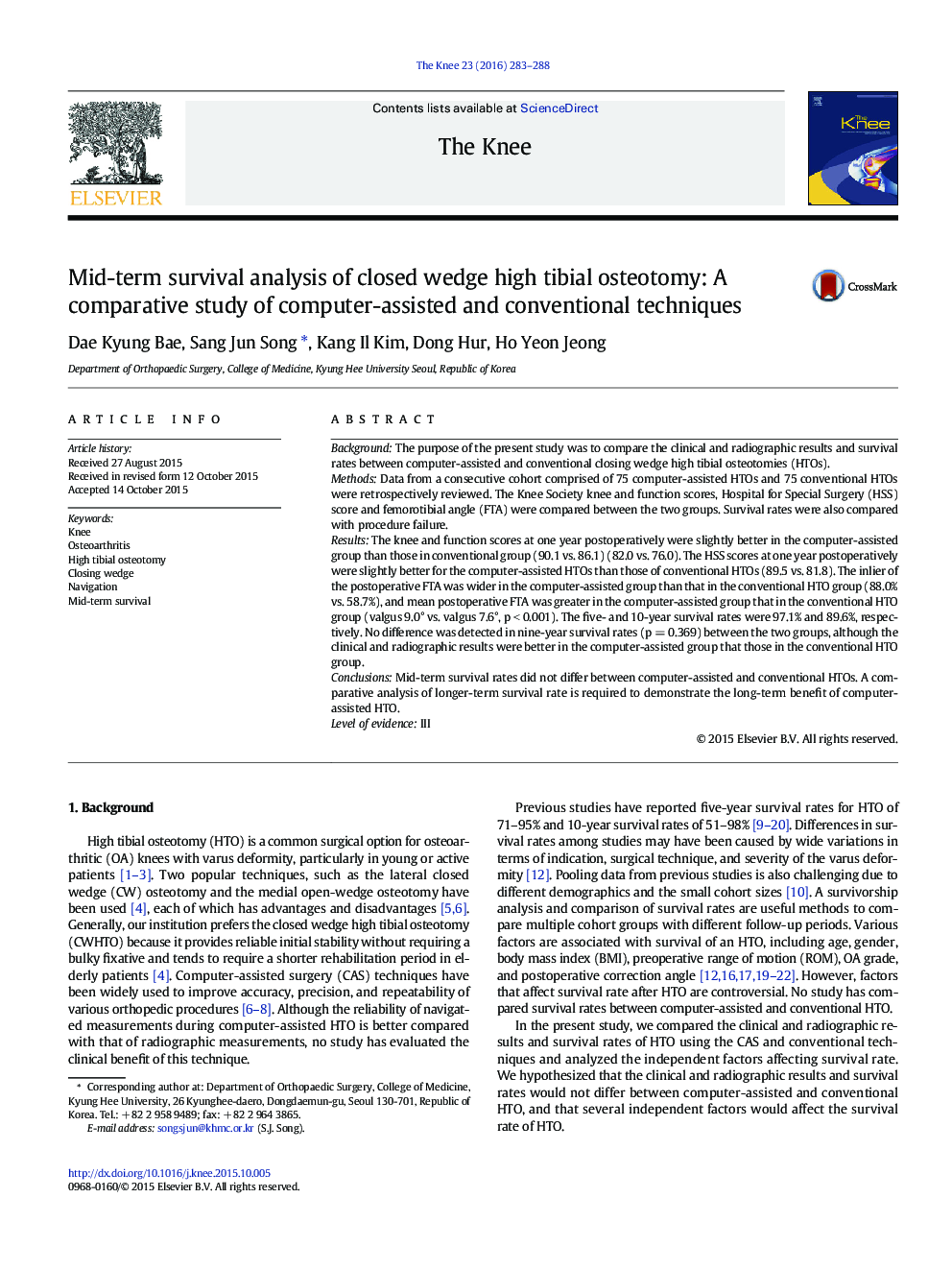| کد مقاله | کد نشریه | سال انتشار | مقاله انگلیسی | نسخه تمام متن |
|---|---|---|---|---|
| 4077293 | 1267210 | 2016 | 6 صفحه PDF | دانلود رایگان |
• The short-term results seemed to be better in the computer-assisted group than those in the conventional HTO group.
• Postoperative FTA was the only independent factor affecting long-term survival.
• Mid-term survival rates did not differ between computer-assisted and conventional HTOs.
BackgroundThe purpose of the present study was to compare the clinical and radiographic results and survival rates between computer-assisted and conventional closing wedge high tibial osteotomies (HTOs).MethodsData from a consecutive cohort comprised of 75 computer-assisted HTOs and 75 conventional HTOs were retrospectively reviewed. The Knee Society knee and function scores, Hospital for Special Surgery (HSS) score and femorotibial angle (FTA) were compared between the two groups. Survival rates were also compared with procedure failure.ResultsThe knee and function scores at one year postoperatively were slightly better in the computer-assisted group than those in conventional group (90.1 vs. 86.1) (82.0 vs. 76.0). The HSS scores at one year postoperatively were slightly better for the computer-assisted HTOs than those of conventional HTOs (89.5 vs. 81.8). The inlier of the postoperative FTA was wider in the computer-assisted group than that in the conventional HTO group (88.0% vs. 58.7%), and mean postoperative FTA was greater in the computer-assisted group that in the conventional HTO group (valgus 9.0° vs. valgus 7.6°, p < 0.001). The five- and 10-year survival rates were 97.1% and 89.6%, respectively. No difference was detected in nine-year survival rates (p = 0.369) between the two groups, although the clinical and radiographic results were better in the computer-assisted group that those in the conventional HTO group.ConclusionsMid-term survival rates did not differ between computer-assisted and conventional HTOs. A comparative analysis of longer-term survival rate is required to demonstrate the long-term benefit of computer-assisted HTO.Level of evidenceIII
Journal: The Knee - Volume 23, Issue 2, March 2016, Pages 283–288
